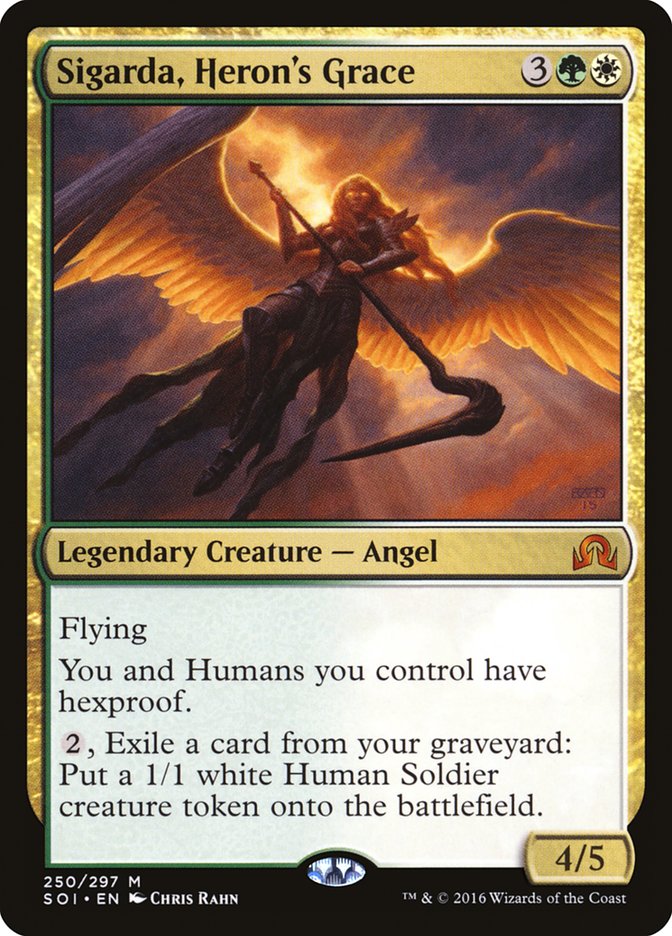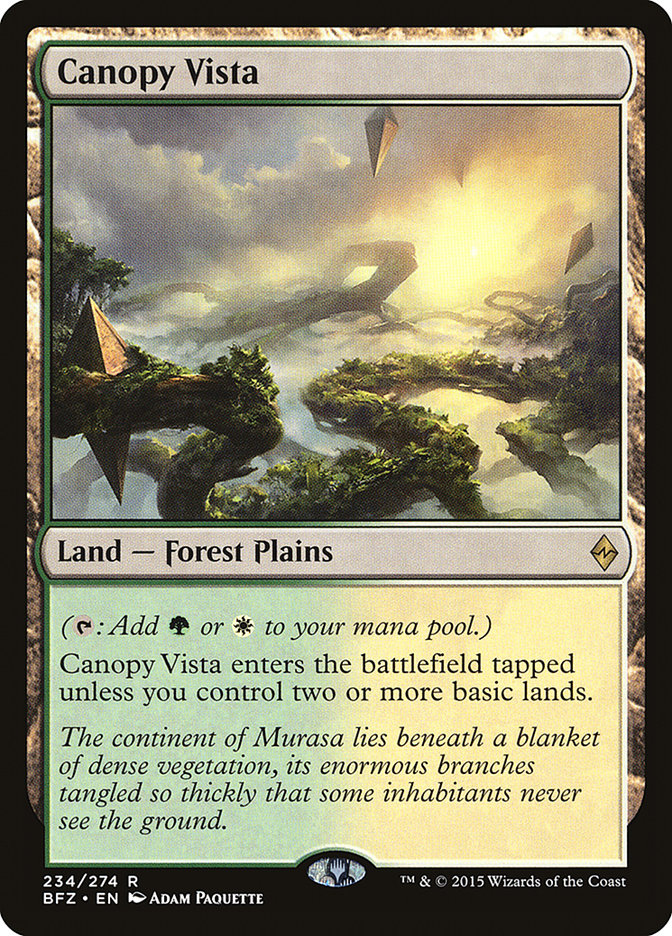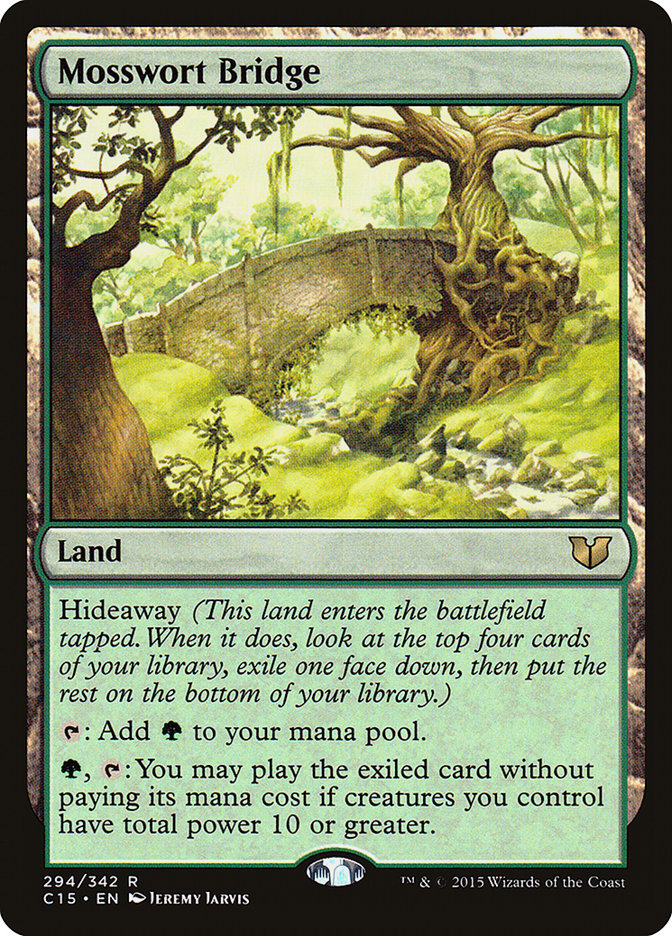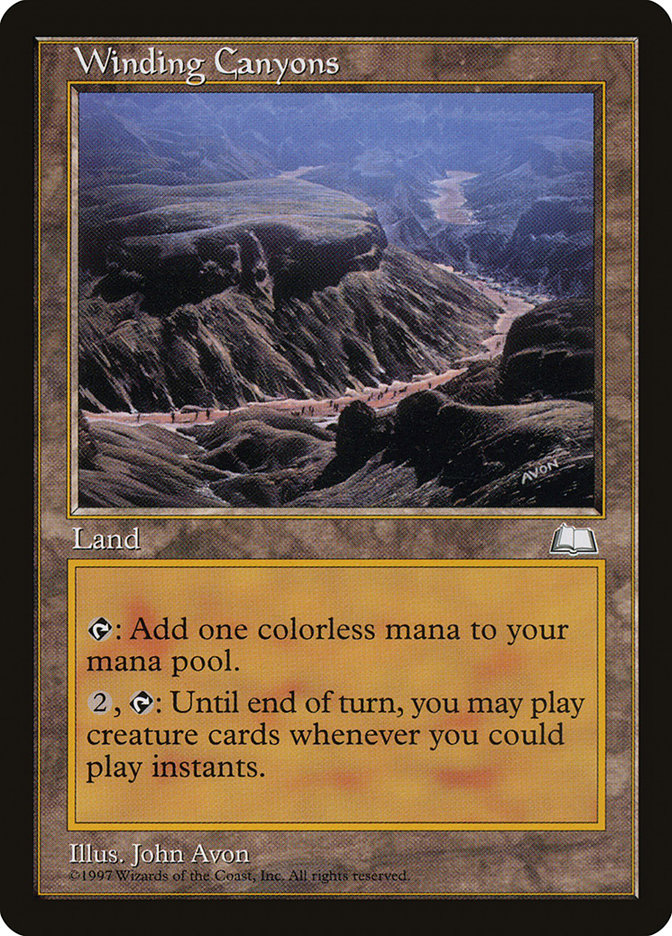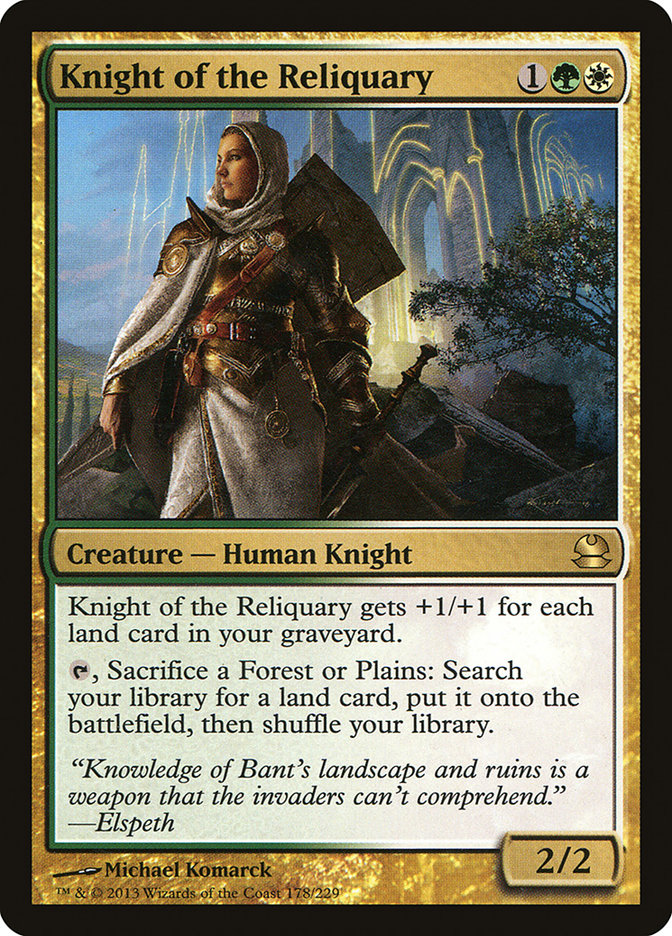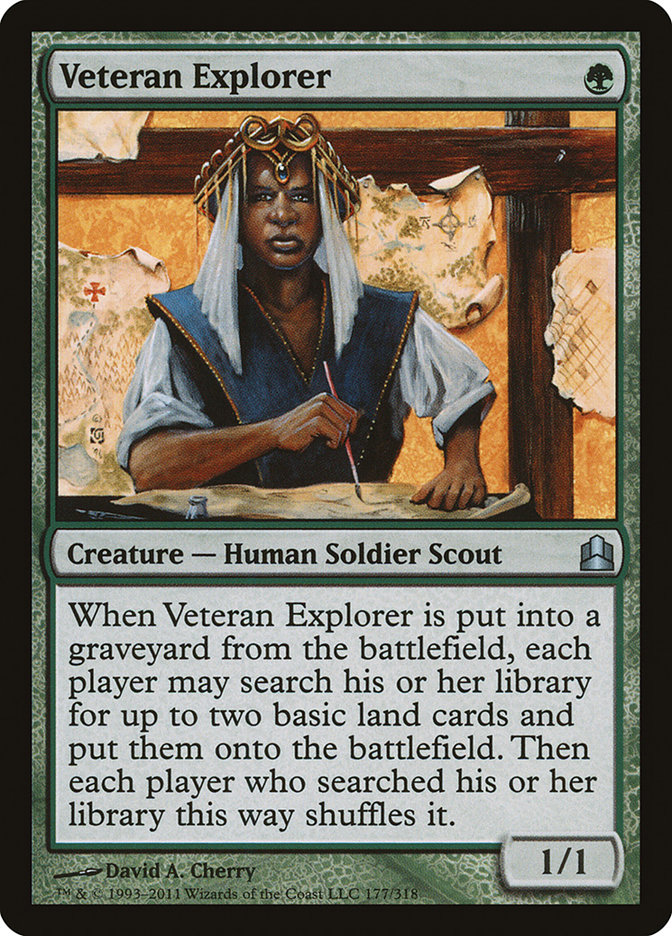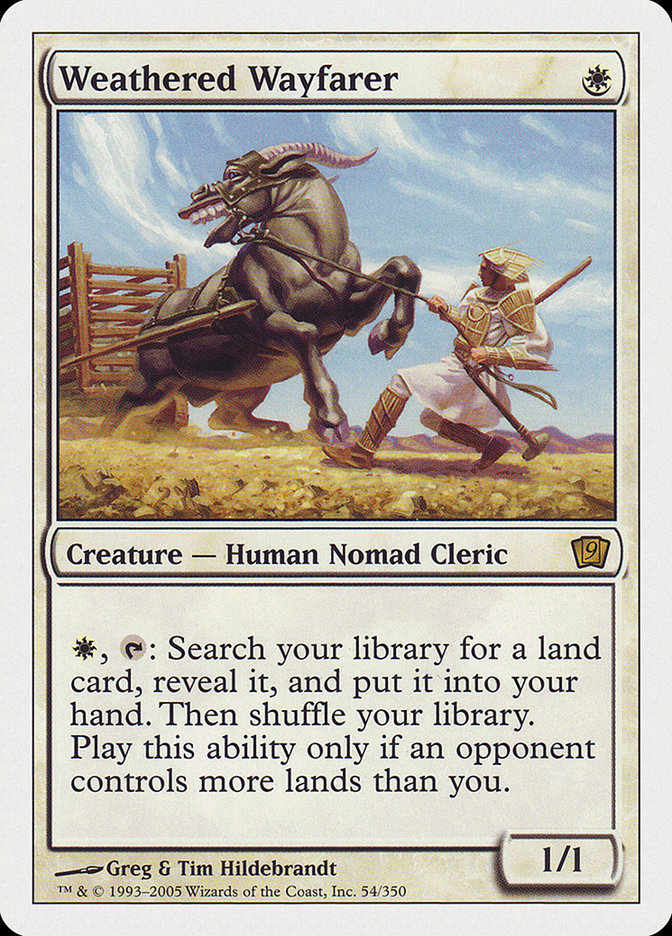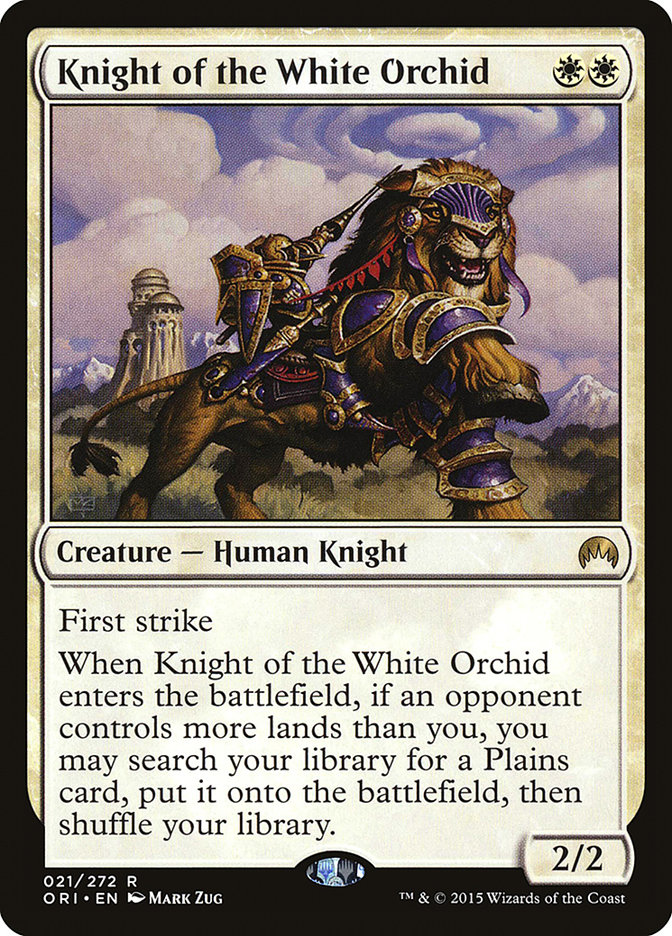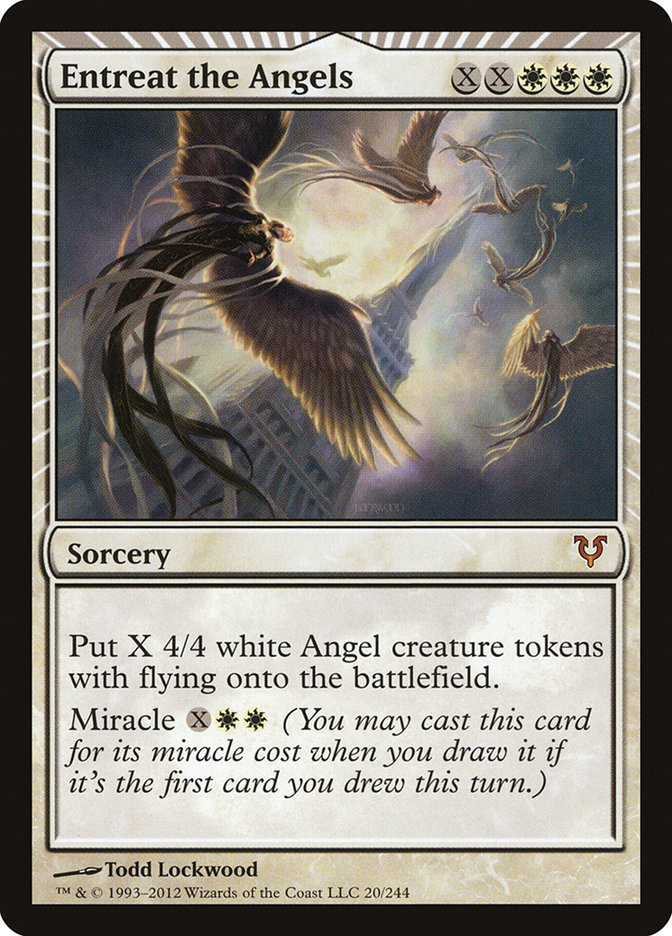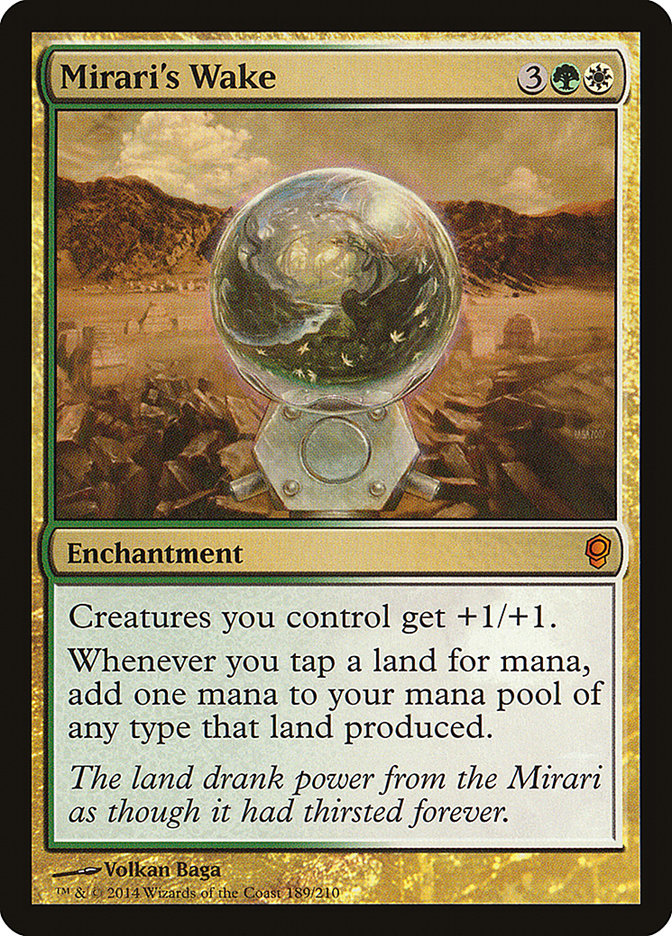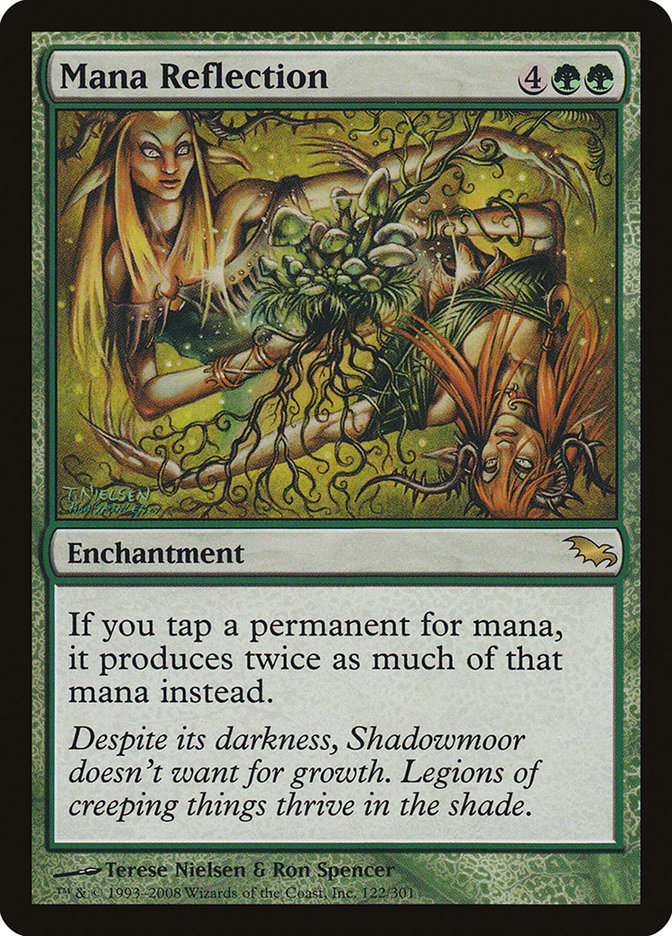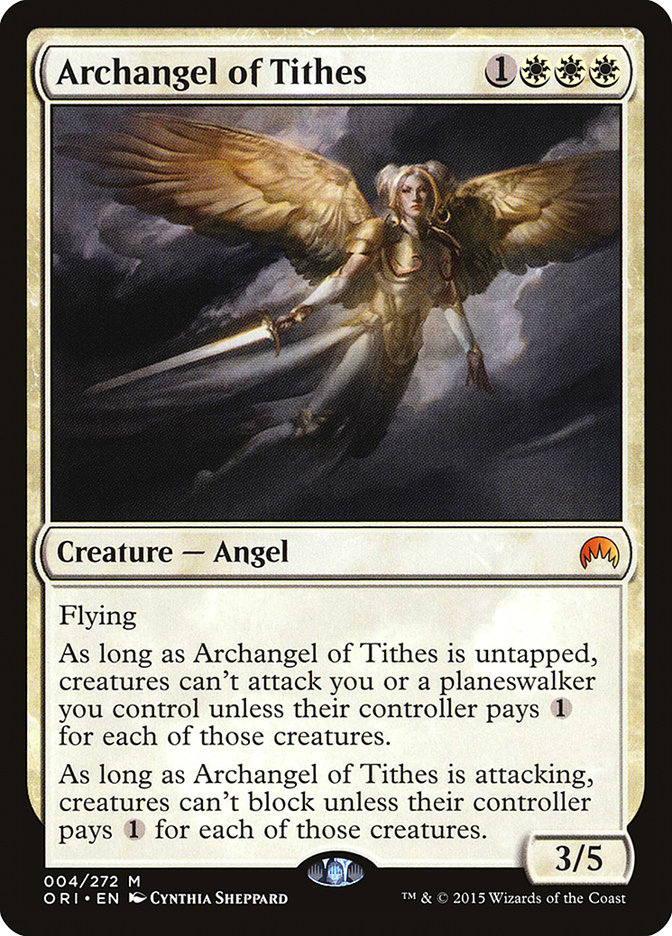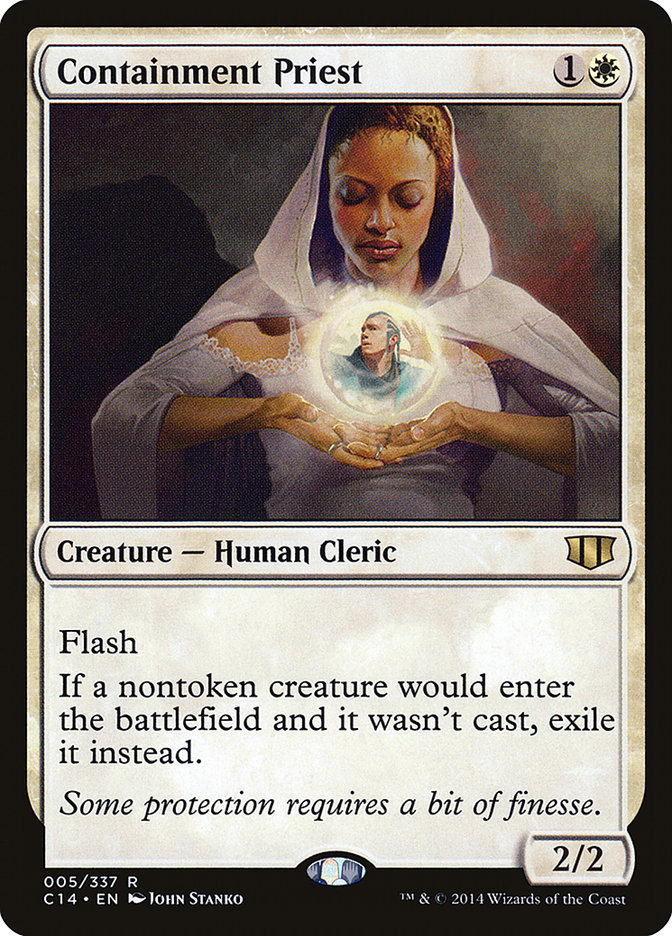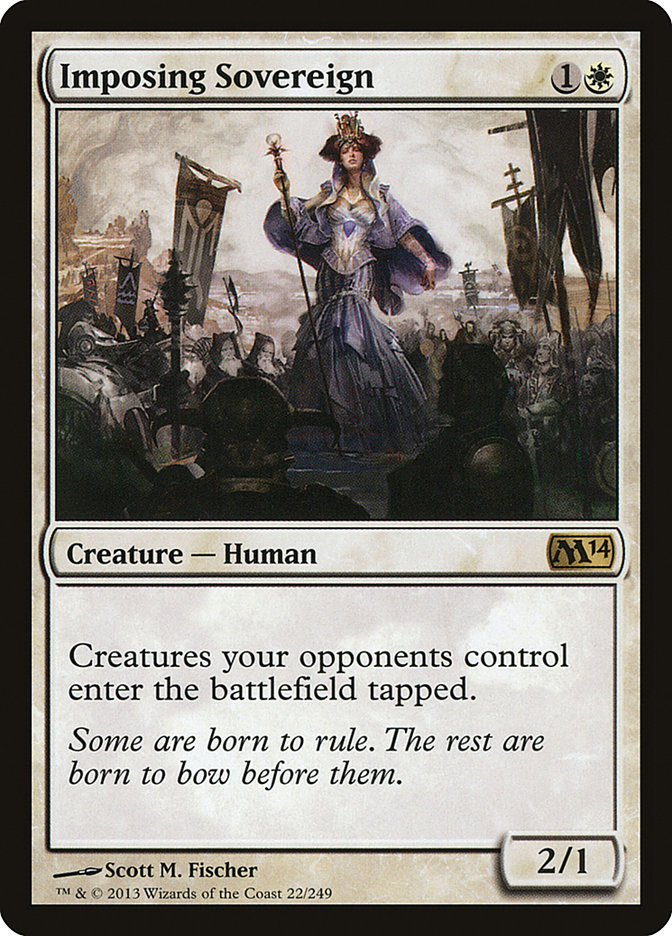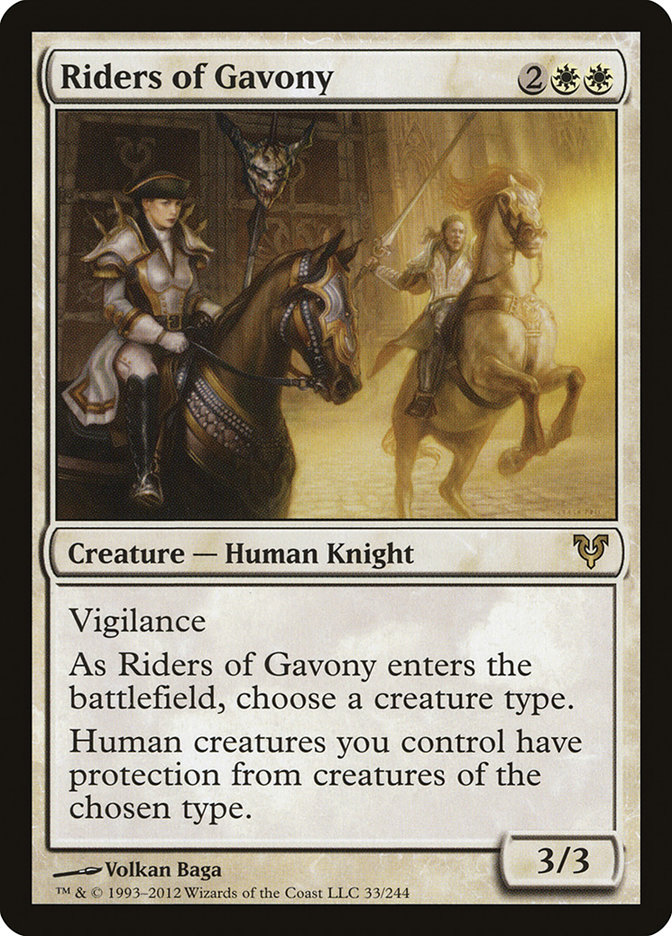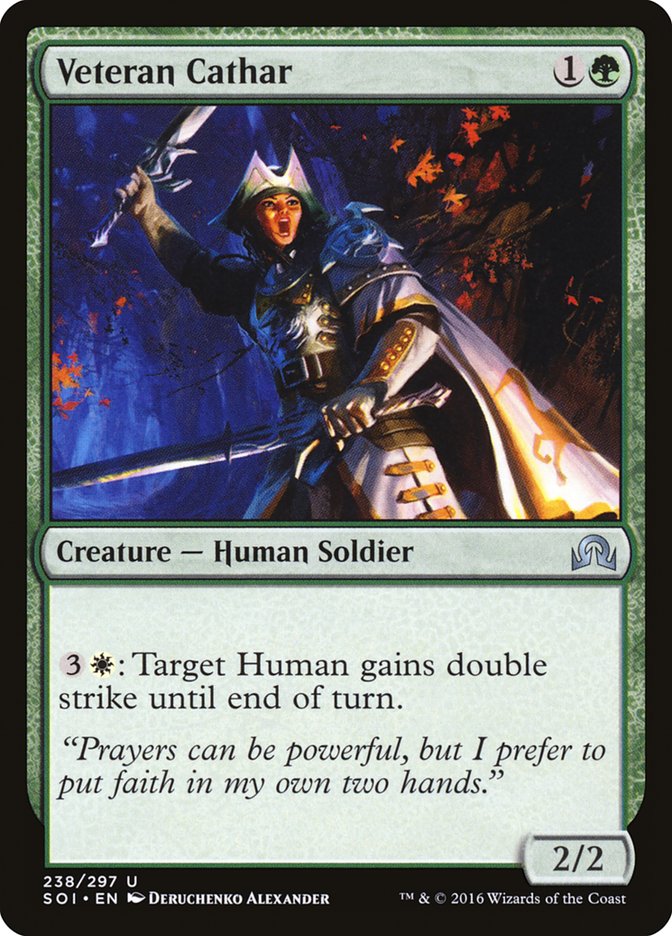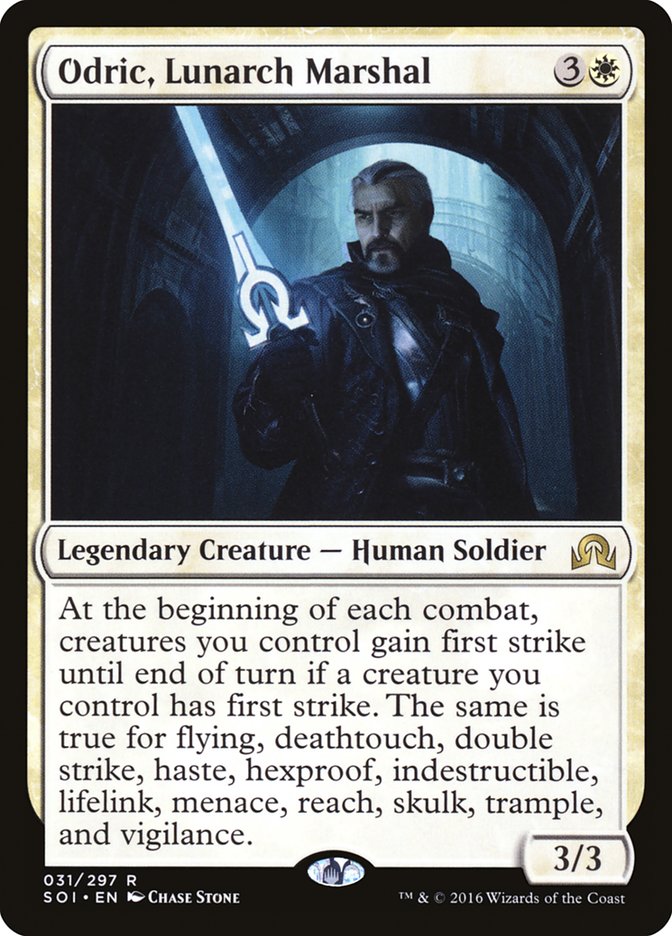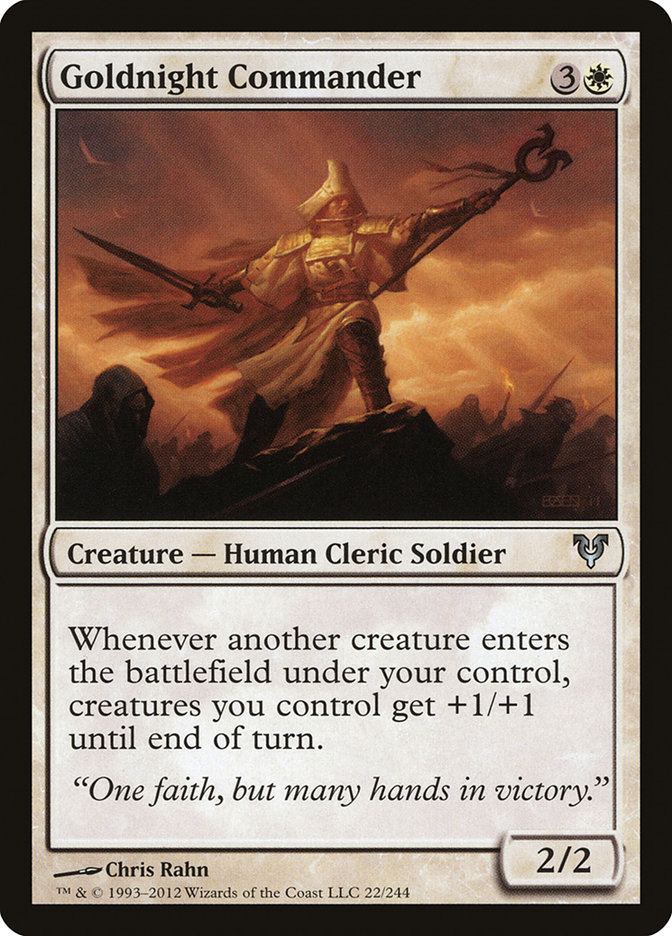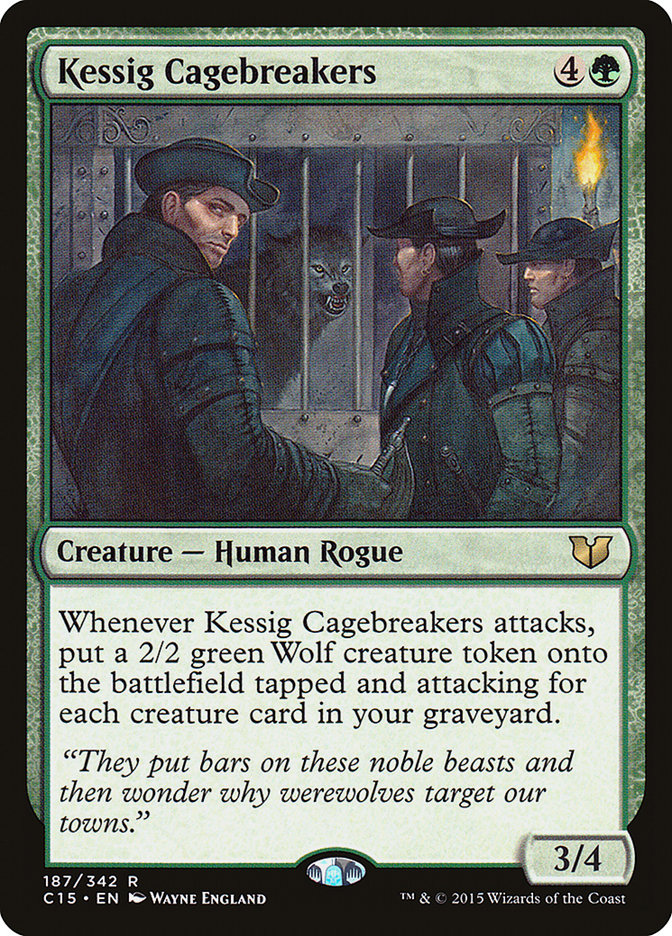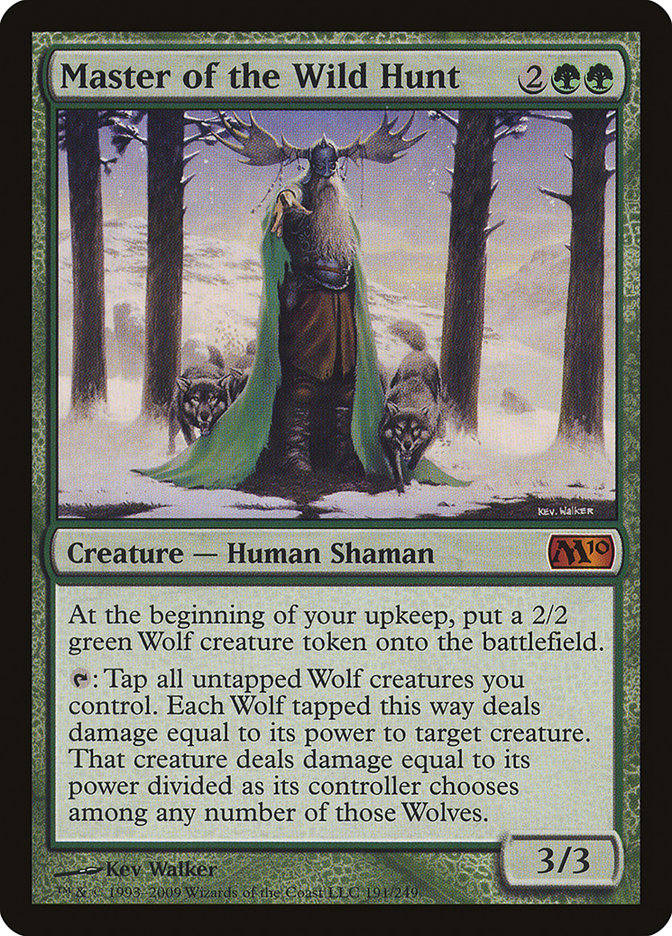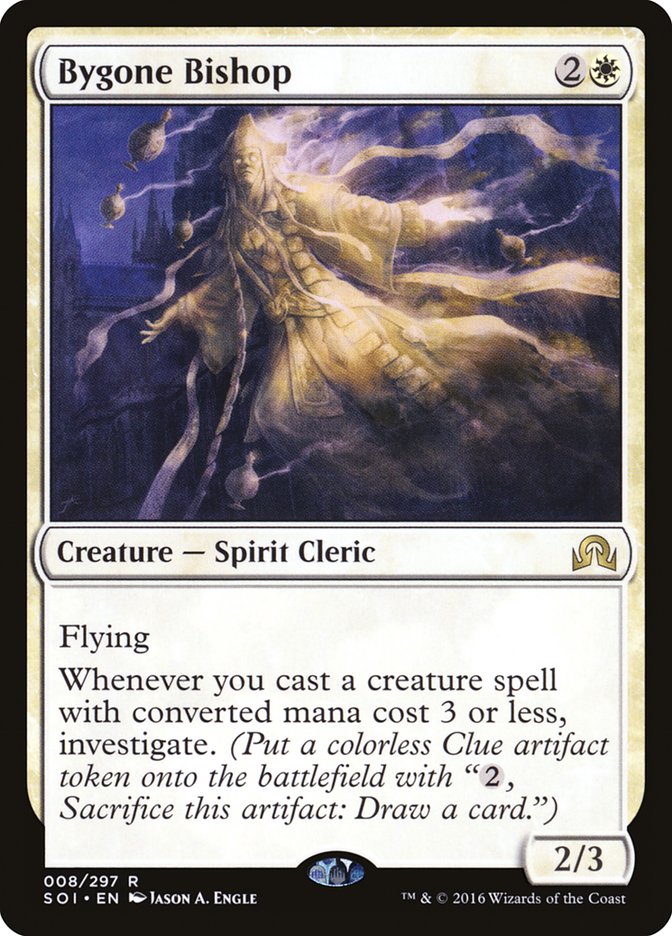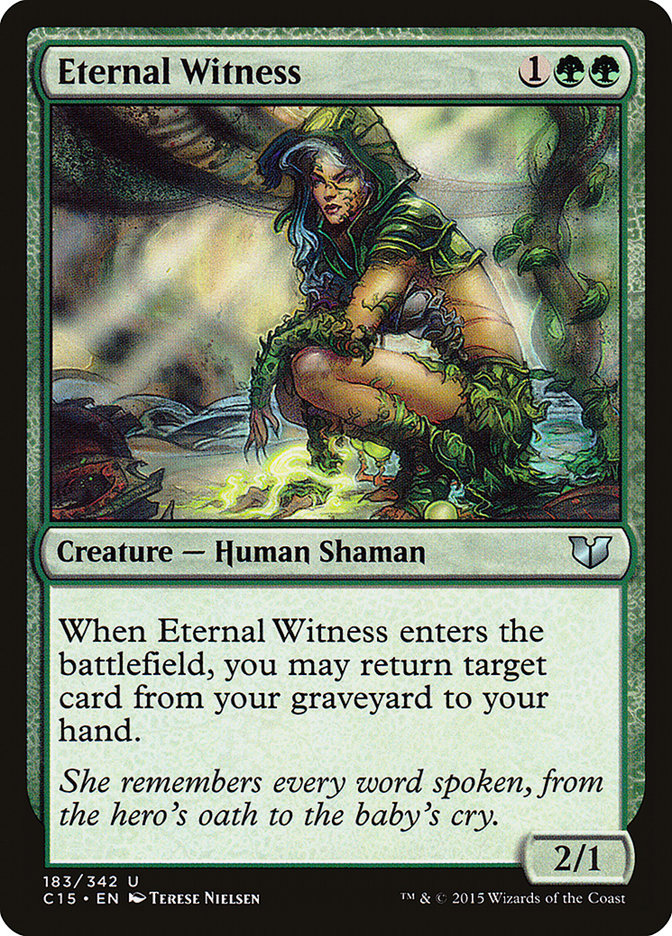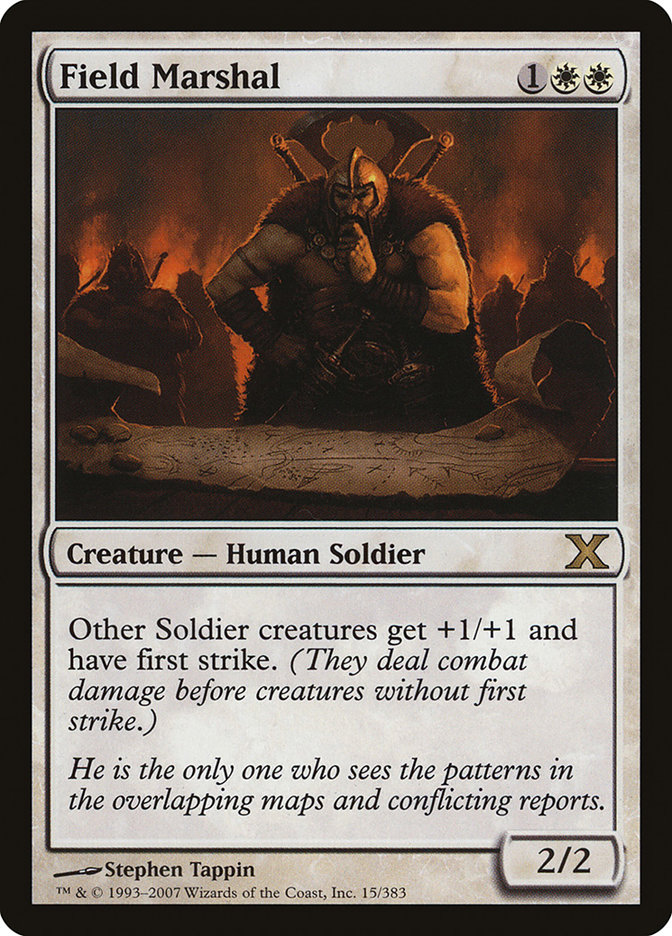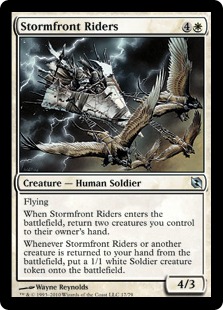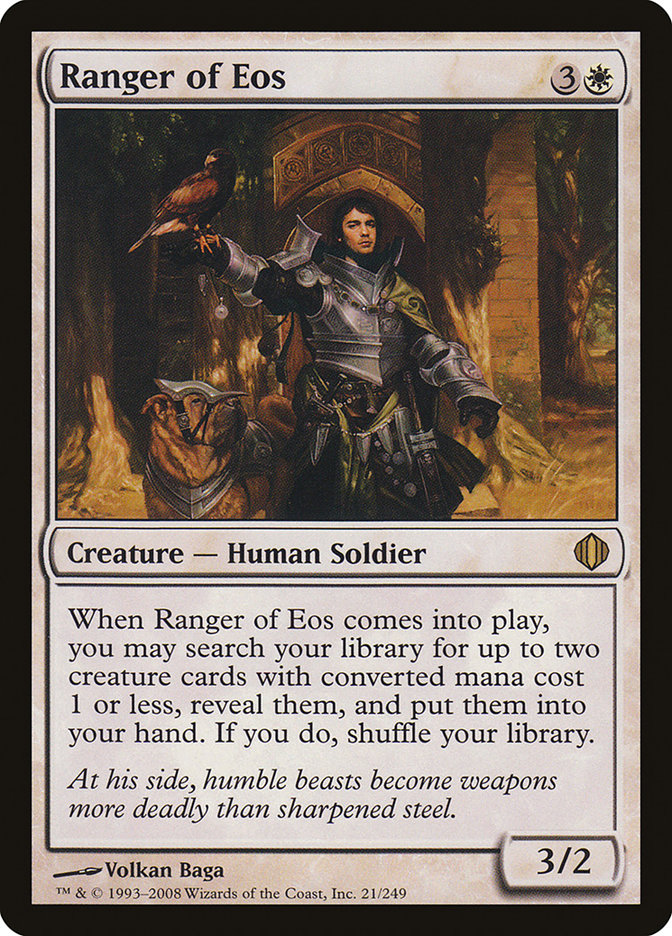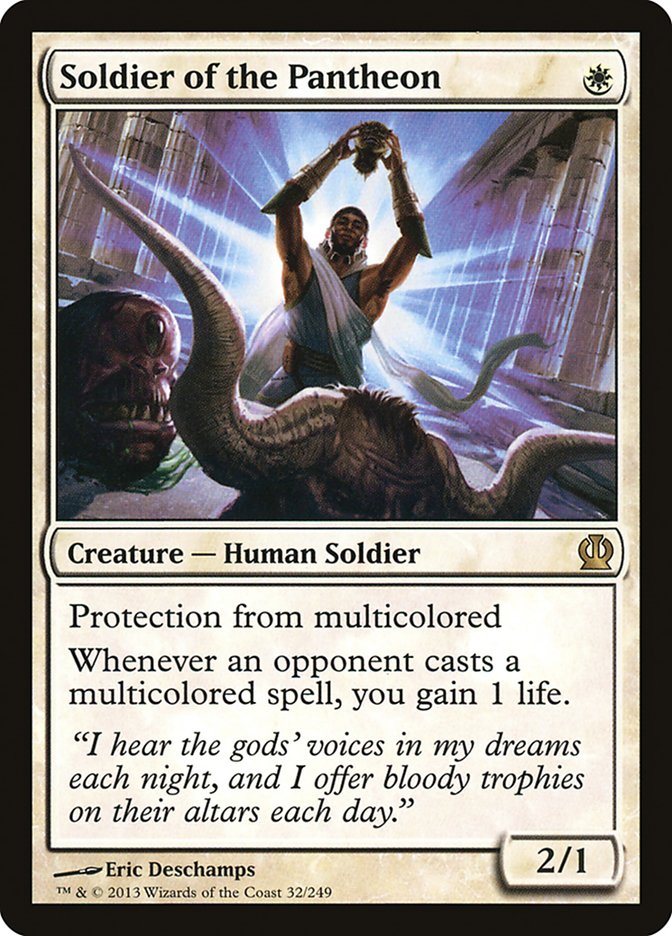There are many different ways of approaching a Commander build. I’ve always been a fan of the “what cards do I want to play with” approach, particularly after the release of a new set… but that’s not the approach I want to discuss this week. Nor am I going to be chasing raw power this week, though that is the main consideration for many. No, this week I want to talk about packages.
The basic framework of a package-based approach involves breaking a deck down into its fundamental components so as to isolate the underlying skeleton. The skeleton is made up of those cards without which a deck wouldn’t function; in practice, that tends to be the lands, draw engines, and mana rocks that let the rest of the deck work. What the skeleton almost never includes is a victory condition; since most decks can support multiple lethal lines of play, those victory conditions make up the heart of different kill packages which can be supported in any given skeleton.
Sometimes a kill package is a two-card combo, surrounded by some number of means of digging for it; sometimes it’s a synergistic tribal theme, which will build to a critical mass over the course of a game. But not all packages are focused on the kill. There are also control packages, which focus on dictating the course of a game, and political packages, which focus on currying favor and manipulating choices.
As you can imagine, there are far more packages than there’s space in any given deck. As such, if you want to build a strong deck, it can be helpful to focus on a couple of different packages to the exclusion of other temptations. This is one of the reasons to avoid a set of “always play” staples: they take up slots that could be used to increase the potency of one of your packages, but instead they’re taking up space being generically powerful.
The neat thing about packages is that they can seem less powerful than they are, because you’re drawing from a broader pool of cards and playing these oddballs in a context in which they can shine. Everyone is going to properly assess Solemn Simulacrum, a card that’s good in most decks and great in a select few, but Wild-Field Scarecrow is going to have people a little more confused, even if in the deck in question the Scarecrow is better than the Golem (like in a Reaper King deck, or a deck that relies on creatures self-sacrificing, or one that would rather have lands in hand).
With that in mind, let’s look at this week’s submission:
Dear Azami,
I have been looking forward to playing the new Sigarda since she was spoiled. I immediately began working on a solid list of fun Human tribal that wasn’t so budget. I could never afford this version, but it was a blast to make.
Creature (38)
Land (35)
Emeria, The Sky Ruin
7 Forest
13 Plains
Sorcery (8)
Instant (2)
Artifact (11)
Enchantment (5)
Description:
The game plan is to swarm the board with utility Humans and Angels while dominating combat through outrageous global enchantments and artifacts.
Thanks Azami,
Corey
Before we go any further, I should talk budget. Since Corey seemed to be building a fantasy decklist, I threw out budget restraints. In the end, that meant a higher build total than usual, but I wanted the freedom to play out the point, and this submission offered that. So when my total is over $100, even without the $20 store credit all submitters receive when their deck is chosen for Dear Azami (submit!), don’t get sticker shock.
I began by taking a closer look at Sigarda, Heron’s Grace. She’s an Angel, and she’s got more toughness than power, both of which mean she tangles well… but the reason to play Sigarda, Heron’s Grace over her prior incarnation, Sigarda, Host of Herons, is to take advantage of her other two abilities: giving Humans hexproof and creating Human Soldier tokens at instant speed.
Out of the gates, this had me interested in the Soldier subtheme. Due to the way that Human tribal didn’t exist prior to the original Innistrad block, tribal Soldiers has much overlap with tribal Humans. Before Innistrad, Human was assumed. A “Creature – Soldier” would eventually be retconned to be a “Creature – Human Soldier” in the Grand Creature Type Update of 2007. As such, the white Goblin Ringleader in Apocalypse is Enlistment Officer, an otherwise underwhelming 2/3 first striker with the ability to draw any Soldier creatures in the top four cards of your library. We’re probably not going to go that deep into the Soldier theme, but it’s almost certainly going to play a larger role in the final build than it does now.
From there, thinking about the Soldier theme suggests a fun little sub-package: Ranger of Eos and friends. Many decks aren’t thrilled to cast one-drops, but when you have the promise of a creature that can find any two that you need, a toolbox of possibilities opens. For example, there’s Soldier of the Pantheon. In some matchups the thing is nigh-useless; against a Rafiq of the Many or any other multicolor, ground-attacking, trample-free commander, it can stand as a permanent roadblock, all while gaining you some incidental life.
But before we get to those pieces, I had to restructure the skeleton a bit.
Lands
Out (4): Gaea’s Cradle; Forest; Forest; Plains
In [Lands] (7): Buried Ruin; Canopy Vista; Mistveil Plains; Mosswort Bridge; Temple Garden; Windbrisk Heights; Winding Canyons
In [Land Theme] (7): Budoka Gardener; Knight of the Reliquary; Knight of the White Orchid; Noble Templar; Veteran Explorer; Weathered Wayfarer; Yavimaya Elder
For starters, this deck needs 38 lands. It may seem odd, but the decks where you can most afford to cut lands are ones with plentiful draw engines, particularly early ones. A five-drop commander with a somewhat costly ability and no inherent draw synergies is not in that category, especially given how the deck’s color identity is pulled primarily towards its white side.
Next, let’s talk about the Elephant in the room: Gaea’s Cradle. I am not of the mind that all decks benefit from having Gaea’s Cradle. It draws a lot of threat, and it has no specific synergies in this deck other than going wide. Yes, it can help you clean your graveyard with Sigarda, Heron’s Grace’s token ability, but to what ends? The deck is not set up to make good use of a ton of green mana, and it has no other land-untapping synergies. Even in a fantasy deck, I would cut this thing.
(And, for what it’s worth, I am familiar with the power of the card; one of the Legacy decks gracing my bookshelf at the moment is Elves. In the right context it’s definitely bonkers, but all Commander decks do not offer that context.)
Before talking about the lands I brought in, let’s take a look at the land synergy package I landed on. There are a lot of decent G/W land-themed creatures with the Human subtype! Veteran Explorer can almost always get popped, and it and Weathered Wayfarer are both fetchable by Ranger of Eos. Weathered Wayfarer, like Budoka Gardener and Knight of the Reliquary, is more likely to make it to untap because of Sigarda, Heron’s Grace’s hexproof ability.
And Knight of the Reliquary, like Knight of the White Orchid and Noble Templar, pushes us towards running more typed nonbasic lands. Canopy Vista, recently printed in Battle for Zendikar, makes a better inclusion than Fortified Village for this reason, though in a perfect world these lands are definitely both worth running together.
But now that we have Knight of the Reliquary and Weathered Wayfarer, we can bring in a package of toolbox lands to search up as well. Mosswort Bridge and Windbrisk Heights both offer ways to turn these land tutorings into card advantage; Mistveil Plains and Buried Ruin both let you reintegrate fallen pieces of your fun machine. Winding Canyons, the odd one out, speeds up a deck where the primary means of instant-speed interaction is going to be “surprise” tokens from Sigarda, Heron’s Grace.
Ramp
Out (9): Avacyn, Angel of Hope; Caged Sun; Cultivate; Elesh Norn, Grand Cenobite; Entreat the Angels; Extraplanar Lens; Gauntlet of Power; Genesis Wave; Thran Dynamo
To clear out the room for those additions, I had to make some cuts. This should answer a question for those marveling at my assertion that there were not good things to do with Gaea’s Cradle mana… not only have I cut power beef like Avacyn, Angel of Hope and Elesh Norn, Grand Cenobite, I took out Entreat the Angels and Genesis Wave, two of the deck’s only mana sinks. I did so for relatively straightforward reasons.
I dislike Genesis Wave outside of decks built around it or Warp World. In a deck not built to maximize its advantage, you generally end up putting out a lot of threat (since it’s incredibly threatening to resolve) without necessarily setting yourself up for victory upon its resolution. Sigarda, Heron’s Grace lacks any enters the battlefield synergies, so there’s no real tie between the card and inclusion; it’s just here because it’s a good card. In many situations that’s fine! I just don’t like how that power balances out against its threat.
Entreat the Angels seems similarly off-theme and is not alone a reason to commit to Gaea’s Cradle levels of aggro. Entreat the Angels is a fair card unless it’s been cast for its miracle cost; in fact, it compares unfavorably to Decree of Justice when you don’t have ready access to miracle it. I mean, Decree of Justice has an entire secondary mode once it gets to your hand… the reduction in converted mana cost between Entreat the Angels and Decree of Justice is also largely offset by the color specificity. WWW is harder than 2WW in a multicolor deck. If you had a ready means of putting Entreat the Angels on top of your library, even if it was just a Crystal Ball or Sylvan Library, I would consider it.
Of course, I still think I would cut it. Angels have no tribal synergy in this deck; the closest thing to an Angel synergy is Herald of War… and Entreat the Angels isn’t going to get any advantage from that card. It’s not worth adding in filler to make a card like this better when it’s cleaner just to cut it.
I have, upon occasion, mentioned that I do not like Avacyn, Angel of Hope. Here is no exception; its main synergy is a better version of your commander’s effect, for more mana. I’m a fan of redundancy, but one’s commander rarely needs redundancy. There was an argument for it before they changed the rules to ensure access to your commander, and I think there’s a holdover tendency, one that I fight from time to time, to forget how radical a change that really was. Avacyn, Angel of Hope is a powerhouse that draws a ton of aggro without advancing your gameplan meaningfully better than the cheaper card you’ll always be able to cast. That sounds cuttable to me.
Elesh Norn, Grand Cenobite is basically the Hatebear Anthem, and for reasons I’ll outline below, that’s not the ideal strategy for this deck. Still, as a non-Human she receives no protection from Sigarda, Heron’s Grace, while still maintaining all the fragility of a creature. If ever there were a creature to spot-remove it would be Elesh Norn, Grand Cenobite, and this deck has no way to protect her. Since she’s extraneous, that leaves her on the cutting room floor.
Finally, let’s talk mana doubling. Bottom line? There is such thing as too much of a good thing. This is basically the perfect Mirari’s Wake deck, and Mana Reflection is always worth a look, especially with cards like Shaman of Forgotten Ways. But the deck doesn’t really need three more iterations of this effect. And even if it did, these particular mana doublers are greatly weakened in a two-color deck.
Caged Sun, the strongest, is still going to miss somewhere between 30% to 50% of your lands; the basic land restriction on Gauntlet of Power and Extraplanar Lens means you’re boosting maybe a third of your manabase, tops. This decreases further when you add in Knight of the Reliquary, which we have, because you’ll mostly want to be blowing up basics to upgrade them, and those incentives twist when you have to balance upgrading lands against only having your basics doubled.
It’s a mess, and not worth the slot. Not that the deck even needs a ton of mana! That is part of an optional victory strategy, ramping out big stuff, and not a skeletal need of the deck. That’s why Thran Dynamo gets cut as well. Some decks are more concerned with ramping up to seven mana than others.
Hatebears
Out (6): Angelic Arbiter; Archangel of Tithes; Containment Priest; Grand Abolisher; Imposing Sovereign; Thalia, Guardian of Thraben
Now let’s cut some packages. I considered leaning into the Hatebears subtheme, bringing in cards like Magus of the Moat (sense the Magi are Human). Hatebears, for those blessed enough to be less steeped in the Magic lingo, are creatures, often green or white, that shut down some axis of the game. The platonic ideal of a Hatebear would be Gaddock Teeg: he’s a two-drop 2/2 who shuts down two entire classes of noncreature spells. The argument for a Hatebears package in a Sigarda, Heron’s Grace deck would hinge on the fact that many of these creatures are Human, and by giving them hexproof Sigarda would keep them on the battlefield for longer.
The problem with Hatebears is that people like to play Magic and will generally do whatever it takes to get a game back to a point at which they can continue to do things. The more avenues of play you shut down, the more pressure you’ll have to withstand to keep your blocks online. It’s possible, and some folk even like playing that role… but I tend to prefer a proactive game plan.
Still, I didn’t cut everything. Frontline Medic is good at attacking while complicating your opponents’ X-spell math, Dosan the Falling Leaf slows the game down to creature speed, and Archetype of Courage makes combat unfavorable but not impossible for your opponents. That’s the sweet spot.
Archangel of Tithes and Angelic Arbiter are both Angels. With no specific tribal synergies, these seemed like easy cuts. I did keep Angel of Jubilation, but it’s synergistic with the broader themes. It doesn’t just give your Humans a bonus; it gives one to the whole team. Neither Archangel of Tithes nor Angelic Arbiter scales with your theme.
Containment Priest is great in Legacy and annoying in Commander. In Legacy, when a person sneaks something onto the battlefield, it’s usually something huge and game-ending, like Emrakul, the Aeons Torn. But Emrakul is banned in Commander, and Commander players are more likely to be using something like Garruk, Caller of Beasts than Sneak Attack or Show and Tell. It’s a hard block for Reanimator strategies and other “cheater” decks, which means they have to go through it, and you, if they want to play the game they set out to play. Add in the fact that Containment Priest only offers card advantage if you do it in response to one of these effects, and you have the prospect of making a very determined enemy for relatively little payoff.
The effects of Grand Abolisher; Thalia, Guardian of Thraben; and Imposing Sovereign are all moderate nuisances to a Commander deck. You don’t want to be the irritating deck at the table. It engenders attacks of opportunity.
Humans
Out (5): Angelic Overseer; Champion of the Parish; Descendant’s Path; Odric, Lunarch Marshal; Silverblade Paladin
In (3): Bastion Protector; Riders of Gavony; Veteran Cathar
It is possible to reduce most tribal synergies to one of two basic categories: cards that make their tribal friends better and cards that are made better when they have tribal friends. Compare Angelic Overseer to Bastion Protector. Angelic Overseer is probably a better card in many formats. I seem to recall it being somewhat of a bomb in Limited, that’s for sure. But in Commander, a 5/3 indestructible hexproof creature for five mana is actually a pretty weak use of a slot. Even assuming that Sigarda, Heron’s Grace allows you to always maintain that protection, the card doesn’t really advance your gameplan.
Bastion Protector, on the other hand, protects your commander. Since Sigarda, Heron’s Grace herself is not hexproof, she can use the protection; since Sigarda, Heron’s Grace gives Humans like Bastion Protector hexproof, the Bastion Protector is also empowered by Sigarda, Heron’s Grace. It’s a symbiotic relationship. That’s a stronger bond.
Champion of the Parish shows another manifestation of this divide. Champion of the Parish gets stronger the more you commit to the battlefield. In effect, you are taking on an increased risk for the benefit of a single beater. Riders of Gavony similarly drives a deck to commit to the battlefield, but offers protection to offset the increased risk. Your whole team of Humans will benefit from a limited evasion and the ability to brick-wall any tribal strategies, which is definitely worth an increased vulnerability to Wrath of God effects. Champion of the Parish is just cheap beef.
Of course, real life is never a clean binary. No one is average, and Magic cards are made of weird wrinkles. Veteran Cathar is a weaker card than Silverblade Paladin when viewed in a vacuum, but Veteran Cathar plays better with others. Silverblade Paladin gives another creature double strike, but Veteran Cathar gives your whole team “could get double strike.” Double strike potential influences combat more than double strike itself does, because your opponents have to respect the potential or else you get free cards from bad blocks. Plus, Veteran Cathar works in a vacuum; even if it’s the only Human on the battlefield, it has “could get double strike.” Silverblade Paladin is parasitic; without its friend it loses its power, even if Sigarda, Host of Herons makes it easy to reset that link.
Odric, Lunarch Marshal reflects the breakdown in the middle. While he influences your whole team, he requires increased commitment to the battlefield in order to do so. Alone he does nothing, and with only one friend with an ability he only helps himself. Odric, Lunarch Marshal is parasitic until you get two additional creatures on the battlefield with different abilities. While this does mean that, alone, Odric, Lunarch Marshal provides limited hexproof to Sigarda, Heron’s Grace, this protection is quite frail. It really only protects from combat-specific kill spells, and they’re not heavily played in Commander. Otherwise you can just kill Sigarda, Heron’s Grace in the first main phase, before Odric, Lunarch Marshal’s protection kicks in.
Descendants’ Path is decent in decks that manipulate the top of their library, but this is not one of those decks. You could add in Crown of Convergence, but you’d still want at least one more version of the effect. So next thing you know you’re adding in Sensei’s Divining Top and Sylvan Library, because they’re really synergistic with Crown of Convergence, plus the Descendants’ Path plan… and the next thing you know, you’ve added in an entire “top of the deck manipulation” package, with Call of the Wild, Crystal Ball, and Lurking Predators rounding out the mix. It’s a fun little package, I’d advise people to play with it should you find a deck it fits, but this doesn’t need to be that deck. Cutting Descendants’ Path leaves us with more room for some of the bigger themes.
Tokens
Out (3): Gather the Townsfolk; Geist-Honored Monk; Hanweir Militia Captain
In (3): Goldnight Commander; Kessig Cagebreakers; Master of the Wild Hunt
The only way I can think to reliably trigger fateful hour requires building around Worship, Phyrexian Unlife, and similar effects. I’m sure that deck is fun to make, but this is not that deck. Thus, Gather the Townsfolk is just Dragon Fodder, and this deck doesn’t have enough of a token theme to make that a worthwhile use of a slot. Geist-Honored Monk and Hanweir Militia Captain are basically the same creature, and they both incentivize overcommitting to the battlefield with the reward of an off-theme token type. I’m not a purist about this, either; Kessig Cagebreakers and Master of the Wild Hunt are two good off-theme token generators that happen to be Human, but their tokens are better.
With Mayor of Avabruck in the deck, Wolves have some support, making them slightly less off-theme. Also, Kessig Cagebreakers can make a bunch of tokens with each swing, a swing it’s slightly more likely to see given Sigarda-granted hexproof. It’s a little counter-synergistic in that it’s relying on the same resource as Sigarda’s token-generation ability, but Kessig Cagebreakers only cares about creatures while Sigarda, Heron’s Grace can eat anything. Master of the Wild Hunt continues the Wolf theme, while additionally providing removal. And again, the slowness of the ability is slightly offset by the protection Sigarda, Heron’s Grace provides.
Miscellaneous
Out (6): Abzan Falconer; Grafted Exoskeleton; Path to Exile; Primal Command; Second Sunrise; Sword of Feast and Famine
In (2): Bygone Bishop; Eternal Witness
I considered a couple of different packages based on these threads. Abzan Falconer had me considering Abzan Battle Priest, Custodi Soulbinders, and Elite Scaleguard, all Humans. Many of the pieces of the “+1/+1 counters matter” package are Human-typed, and G/W is the right color combination for it. But short of going full Doubling Season, it didn’t seem like there was much interaction between Sigarda, Heron’s Grace and this package. So I cut Abzan Falconer.
Next came the basic Equipment package of Grafted Exoskeleton and Sword of Feast and Famine. Fun fact: Humans are well-represented in the “Equipment matters” engine cards. Auriok Survivors resurrects it, Auriok Windwalker shuffles it around, Auriok Steelshaper cheapens it, Avacynian Missionaries turn into removal with it, Fountain Watch protects it, Relic Seeker and Steelshaper Apprentice search it up, and Puresteel Paladin just goes off with it. There are some strong synergies between the Human tribe and that particular package. But Sigarda, Heron’s Grace doesn’t have any relationship to that package, and that package works better without restricting yourself to a specific tribe. So I cut Sword of Feast and Famine and Grafted Exoskeleton (which, also, gross card!).
Path to Exile and Primal Command suggested a more controlling route. I’ll be honest… I didn’t consider that too heavily. Sigarda, Heron’s Grace just doesn’t read “control finisher” to me, and G/W isn’t my preferred color combination for that archetype.
I did not really get Second Sunrise. This is not a sacrifice deck, and it’s the wrong colors for a Sunforger package. Does it really pull its weight as a “counterspell” to removal?
Eternal Witness is a Human. I like having access to at least one version of this effect, since every once in a while you’ll lose a key piece of what you’re trying to do, and being able to get it back no matter which piece gets knocked out offers incredible peace of mind. Bygone Bishop is synergistic because tribal Humans involves casting a bunch of creatures with converted mana cost of three or less. Also, I just want to play with that card. It looks fun.
Soldiers
In (6): Captain of the Watch; Catapult Master; Field Marshal; Gempalm Avenger; Knight-Captain of Eos; Stormfront Riders
I would consider bringing in this package in most tribal Human decks, no matter the commander. It’s good, and because of the aforementioned absence of tribal Human prior to Innistrad, there’s tremendous overlap between the two tribes. But Sigarda, Heron’s Grace earns the package, because she makes Human Soldier tokens. She could have just made Human tokens, like Thraben Doomsayer or Gather the Townsfolk, but that extra type means you’re guaranteed to get advantages from these lords.
Captain of the Watch is a Mulldrifter that also provides a power boost and vigilance, one of the best keywords in Commander. Field Marshal and Gempalm Avenger both offer the stat bonus as well as first strike, albeit in different fashions. Knight-Captain of Eos and Catapult Master both turn Sigarda, Heron’s Grace’s token-making ability as fodder for bigger things.
Catapult Master goes online and starts threatening to exile more and more things the more fodder you can feed Sigarda, while Knight-Captain of Eos means that with 2W and a card from your graveyard you can repeatedly spam Fog. And just in case you’re running low on cards in your graveyard, Stormfront Riders, which can bounce itself, can make some extra tokens while offering a reset button for other Mulldrifter-type cards.
Ranger of Eos
In (5): Ranger of Eos; Mother of Runes; Soldier of the Pantheon; Spurnmage Advocate; Ulvenwald Tracker
Do you know a great Mulldrifter-type creature? Ranger of Eos. It’s also a Human Soldier! And many of the tools in its kit are Humans! Given these synergies, I was definitely going to find a place to fit in this package.
Within the package, I have previously mentioned the benefits of Soldier of the Pantheon, but the others might require some explanation. Spurnmage Advocate and Ulvenwald Tracker are both repeatable removal engines, albeit with different strengths and drawbacks. The one thing that unites them is their slowness; both require untapping, which is often a turn too long.
Since Sigarda, Heron’s Grace should ensure more Humans making it to see the next day, these cards get better. Mother of Runes has the same speed issue, but a better payoff once she gets online: Sigarda, Heron’s Grace becomes much harder to kill. And since “Mom” is a Human, there’s that synergistic loop that we saw with Bastion Protector.
The List
Creatures (49)
- 1 Mother of Runes
- 1 Dosan the Falling Leaf
- 1 Budoka Gardener
- 1 Weathered Wayfarer
- 1 Eternal Witness
- 1 Yavimaya Elder
- 1 Noble Templar
- 1 Gempalm Avenger
- 1 Catapult Master
- 1 Veteran Explorer
- 1 Spurnmage Advocate
- 1 Field Marshal
- 1 Stormfront Riders
- 1 Knight of the White Orchid
- 1 Knight-Captain of Eos
- 1 Ranger of Eos
- 1 Knight of the Reliquary
- 1 Captain of the Watch
- 1 Master of the Wild Hunt
- 1 Serra Ascendant
- 1 Sun Titan
- 1 War Priest of Thune
- 1 Adaptive Automaton
- 1 Mikaeus, the Lunarch
- 1 Mentor of the Meek
- 1 Fiend Hunter
- 1 Kessig Cagebreakers
- 1 Elder of Laurels
- 1 Mayor of Avabruck
- 1 Thraben Doomsayer
- 1 Angel of Jubilation
- 1 Herald of War
- 1 Champion of Lambholt
- 1 Angel of Glory's Rise
- 1 Ulvenwald Tracker
- 1 Devout Chaplain
- 1 Goldnight Commander
- 1 Riders of Gavony
- 1 Frontline Medic
- 1 Banisher Priest
- 1 Soldier of the Pantheon
- 1 Karametra, God of Harvests
- 1 Archetype of Courage
- 1 Shaman of Forgotten Ways
- 1 Kytheon, Hero of Akros
- 1 Bastion Protector
- 1 Bygone Bishop
- 1 Thalia's Lieutenant
- 1 Veteran Cathar
Lands (38)
- 5 Forest
- 12 Plains
- 1 Temple of the False God
- 1 Winding Canyons
- 1 Temple Garden
- 1 Terramorphic Expanse
- 1 Mosswort Bridge
- 1 Windbrisk Heights
- 1 Mistveil Plains
- 1 Wooded Bastion
- 1 Sunpetal Grove
- 1 Emeria, the Sky Ruin
- 1 Stirring Wildwood
- 1 Evolving Wilds
- 1 Command Tower
- 1 Buried Ruin
- 1 Gavony Township
- 1 Nykthos, Shrine to Nyx
- 1 Temple of Plenty
- 1 Blossoming Sands
- 1 Myriad Landscape
- 1 Canopy Vista
- 1 Fortified Village
Spells (12)

The Cost
|
Card
|
Cost
|
|
0.15 |
|
|
0.15 |
|
|
0.25 |
|
|
0.25 |
|
|
0.25 |
|
|
0.25 |
|
|
0.49 |
|
|
0.49 |
|
|
0.49 |
|
|
0.49 |
|
|
0.69 |
|
|
0.75 |
|
|
0.79 |
|
|
0.99 |
|
|
1.09 |
|
|
1.49 |
|
|
1.49 |
|
|
1.79 |
|
|
1.99 |
|
|
1.99 |
|
|
3.65 |
|
|
3.99 |
|
|
3.99 |
|
|
4.99 |
|
|
4.99 |
|
|
5.59 |
|
|
6.95 |
|
|
9.99 |
|
|
9.99 |
|
|
11.99 |
|
|
12.99 |
|
|
12.99 |
|
|
14.99 |
As you can see, I was not kidding about the cost: at $123.41, this is one of my more expensive builds for Dear Azami. Generally I try not to assume people have deep collections or can afford the priciest of power cards… but given that this didn’t seem to be a deck Corey was actually putting together, I felt somewhat liberated from that constraint. Corey, I hope you enjoy the $20 store credit to StarCityGames.com you’ll be receiving for your participation in Dear Azami; to everyone else, send in your Shadows over Innistrad-flavored decklists and we’ll be working our way through them, buoyed by the joy of building with a new set.
And next time you’re building, try thinking about it in terms of the “skeleton filled with packages” frame. It’s an interesting lens, though definitely not the only one.
Want to submit a deck for consideration to Dear Azami? We’re always accepting deck submissions to consider for use in a future article. Only one deck submission will be chosen per article, but being selected for the next edition of Dear Azami includes not just deck advice but also a $20 coupon to StarCityGames.com!
Email us a deck submission using this link here!
Like what you’ve seen? Feel free to explore more of Dear Azami here, in the Article Archives! And feel free to check Jess’s own Command of Etiquette column on Hipsters of the Coast for more Commander and casual content.


